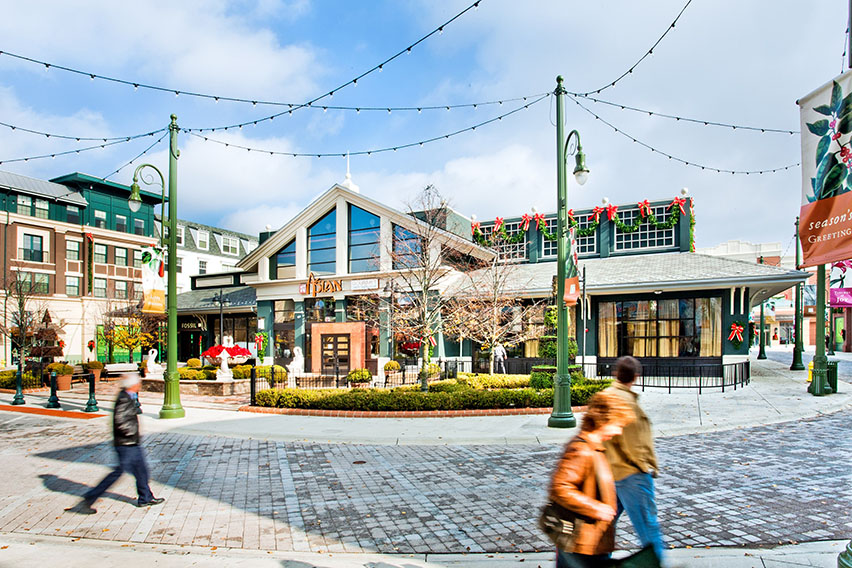By Yaromir Steiner
There are few more recognizably familiar structures than that stalwart American retail icon: the mall. With the rise of the automobile and the growth of suburban living in the middle of the 20th Century, malls exploded onto the retail, social and cultural landscape in a big way. And, while today there is little question that the traditional enclosed regional mall behemoths are buffeted by the winds of change blowing across the retail and mixed-use landscape, malls still occupy a place of prominence in communities across the nation.
The retail world is extraordinarily diverse and the term “shopping center” is often casually used to describe a relatively broad category of retail and mixed-use centers that encompasses everything from traditional enclosed regional malls to neighborhood centers, grocery-anchored community centers, power centers, outlet centers and much more. But while design and development trends have evolved in recent years, there is no escaping the fact that despite the growing influence of new formats and design and development trends, regional malls have been the heartbeat of American retail for the last 50 years. While regional malls represent a fairly modest portion of the overall shopping center square footage in this country (approximately 1 billion square feet of GLA, or about 15% of the 7 billion-square-foot total), their outsized impact on the American psyche and their dominant place on the social and commercial landscape has made them the literal and figurative center of American retail for decades.
It is difficult to overstate the impact that the mall has had on our collective consciousness – not to mention our pocketbooks. Canadian author, researcher and political science professor Arthur Kroker once observed that: “Shopping malls are liquid TVs for the end of the twentieth century. A whole micro-circuitry of desire, ideology and expenditure [representing] ultracapitalism.” As Kroker points out, in many respects, the idea of the mall represents the pinnacle of retail enterprise; a virtual shrine to buying and selling. If we want to take a closer look at how shopping centers are evolving, and if we want to get a better understanding of what the contours of the overall retail forecast might look like, we would be wise to focus on where regional malls are going. Regional malls are the canary in the retail coal mine; the everyday challenges faced by regional mall owners, developers and retailers today are a microcosm of those that are impacting the industry as a whole. Regional malls not only remain a significant component of the larger design and development landscape, but they offer a revealing lens through which it is possible to examine the kind of underlying big-picture issues and trendlines that are shaping the evolution of the next generation of retail and mixed-use destinations. Simply put, examining where regional malls have been, evaluating where they stand today, and analyzing where they may go from here is a great way to create the kind of context and perspective that can provide a revealing glimpse into the future of retail.
What kinds of changes are regional malls wrestling with today? What are the larger economic and social forces that are motivating these changes, and how will those forces manifest themselves going forward?
It is helpful to separate the forces impacting the future of regional malls – and, to a large extent, the shape of the American retail landscape today and in the future – into two broad categories: internal and external. Internal forces include issues directly related to everyday business and operation (retail, development or financing considerations) and external forces include influences manifesting from outside the industry (new land use regulations, cultural and societal shifts). This internal/external distinction is not an easy one to make, and the lines are often blurry. The growth of the internet and the significant influence of online sales, for example, is legitimately considered from both an internal and external perspective (as the example of Apple’s highly successful brick-and-mortar retail locations illustrate). But examining individual issues in this manner does provide some helpful context, and frames the discussion in a way that can identify relevant trends and yield some important insights into the retail destinations of tomorrow.
Internal Forces
- Changing role of the department store
- Emergence of new consumer-driven department stores
- Impact of REIT ownership format
- Integration of leisure-time uses in retail environments
External Forces
- The end of zoning as the sole urban planning tool
- Demand for walkable, mixed-use high-density community spaces
- Environmental considerations
- Internet and online influence on brick-and-mortar shopping destinations
Continue to The Future of American Retail: Part 2






